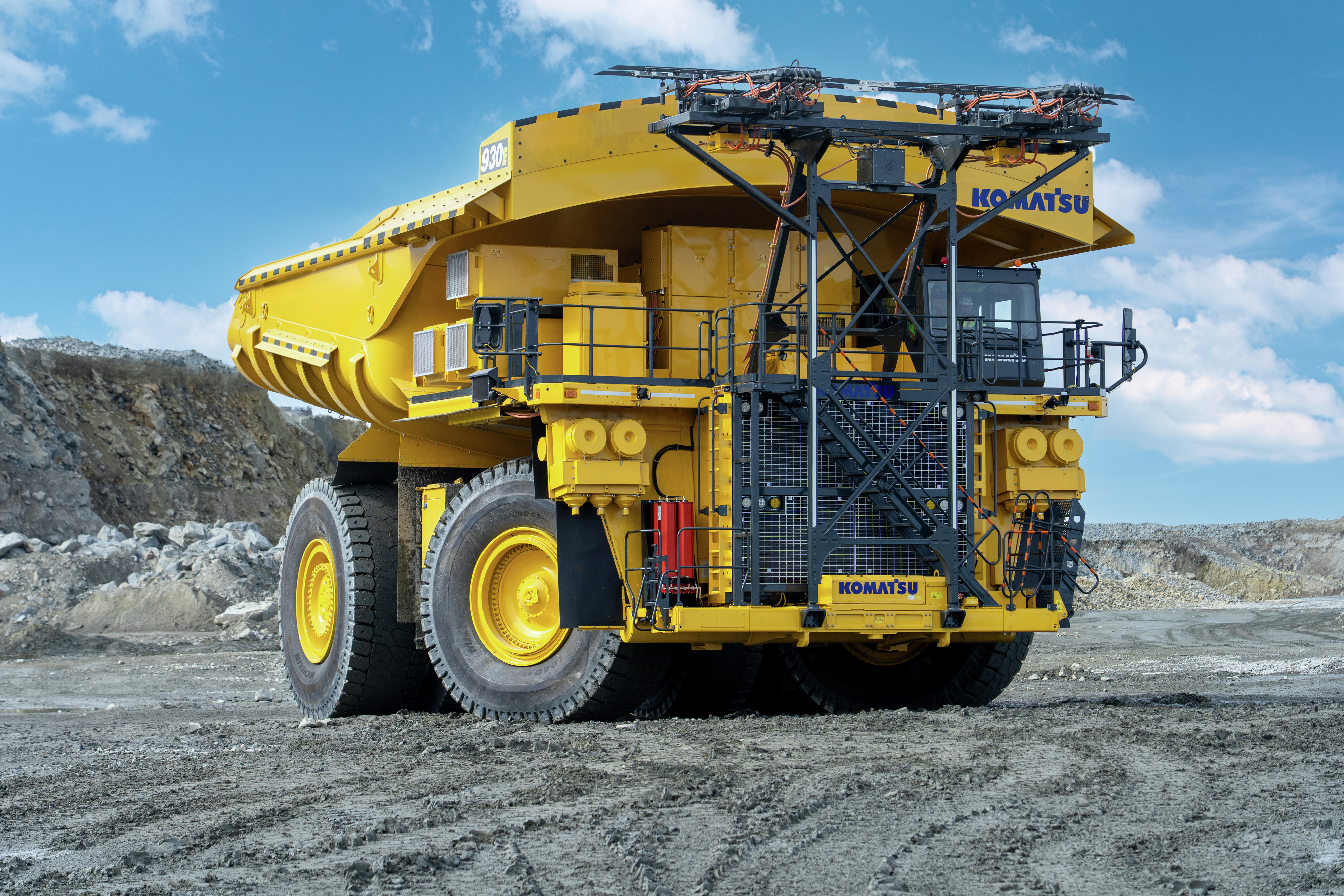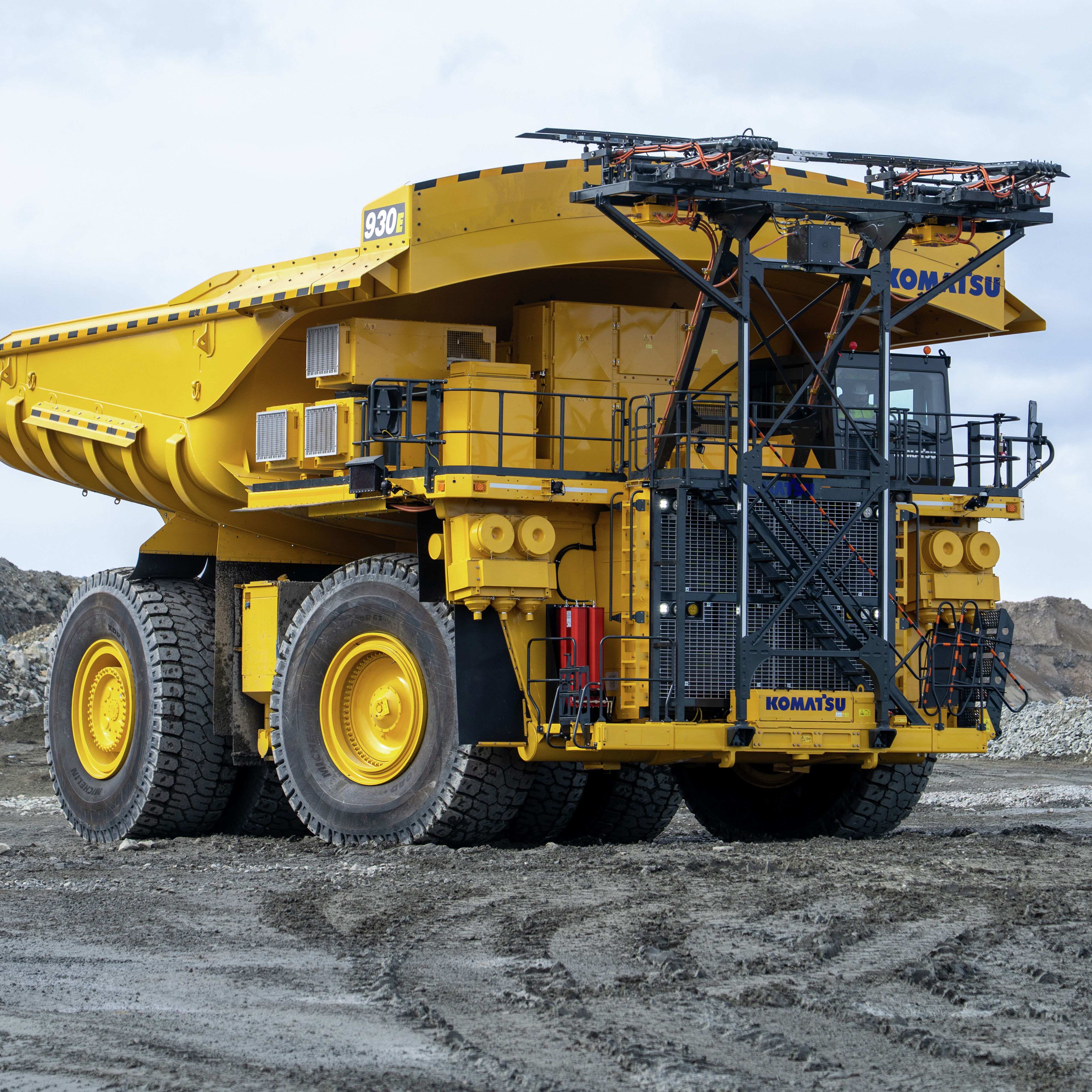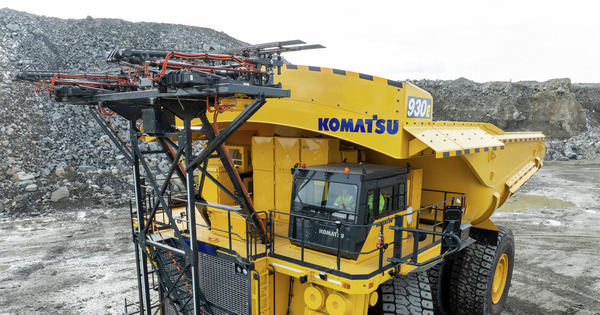In surface mining, decarbonisation is no longer theoretical. It is a real operational challenge, especially in haulage systems. For Komatsu, one of the industry’s heavyweights, the question is not if, but how, and just as importantly, where and when emissions reductions can be achieved without compromising productivity or cost-efficiency.
Anthony Cook, vice president of sales and marketing for Komatsu’s Surface Haulage Business Unit, said: “At the end of the day, we have to provide a solution that’s valuable to the customer. That value has to be economically viable, not just socially responsible.”
That reflects a sector in transition. Operators face pressure from regulators, investors and communities to reduce emissions, but are still bound by capital discipline and performance targets. For Komatsu, the path forward is about precision.
Powering the change: a pragmatic approach
Komatsu’s approach is built on customer-driven innovation across battery electric, hybrid, hydrogen and alternative fuels. The focus is on scalable, serviceable and regionally viable solutions.
Hybrid systems, such as regenerative energy storage, show promise in specific use cases like downhill haulage. Cook said: “There might be applications where it looks like a stronger value case, and we’re evaluating this. But we want to make sure of the value to our customers before we put it out there.”
Battery electric development is also progressing, focused on the 930-class haul truck, a fleet mainstay. “We picked the 930-class because of its applicability and broad market acceptance. It gives us the best chance to understand how to deliver value at scale because of how successful this truck has been, and how well we know and can support this truck platform,” Cook said.
Komatsu’s strategy is application-first. “It will be very application and customer-driven, first and foremost. We have such a variety of customers globally and we need to understand what their objective is. Is it carbon reduction? Cost per tonne? Total cost of ownership? We aim to provide a haulage solution that serves the comprehensive needs of our customers,” he added.
This demands flexibility in design. Komatsu is introducing a power agnostic truck platform that lets customers select the most suitable power source as technology and infrastructure mature.
Cook explained: “Combustion engines will still be a solution for many decades to come. We have to be honest with the constraints of electrification, and when alternate fuels are available to show the value case. It is not practical if you cannot supply the fuel or power.”

Integration, not isolation
Komatsu sees decarbonising haulage not as a simple diesel to battery switch, but a complex systems challenge. Infrastructure, energy sourcing, digital tools and autonomy all influence what is possible.
This complexity is reshaping Komatsu internally. The company has restructured to support cross-functional innovation. “We have a strategic group in the mining technology division that works across business units, and centres of excellence focused on electrification and other emerging technologies to ensure the best solutions are being deployed group wide,” Cook said.
The business of better
Komatsu’s strategy links emissions reduction with business performance. Electrification, when correctly matched to the application, can reduce costs, cut maintenance and increase machine availability.
Cook pointed to the simplicity of electric drivetrains: “If you look at a combustion engine side by side with a battery, and the complexity involved in generating power, certainly the battery technology is appealing.”
Fewer components mean fewer failure points. “There are quite a few percentage points in machine availability that you can gain if you can deliver reliable battery power,” he added.
However, no solution will be released without rigorous field testing. “We want to make sure our solution is either the same or better than existing diesel-powered options. You could argue it has to be better than what we have today. Otherwise, why take the risk?” Cook said.
More than technology: a broader opportunity
For Cook, decarbonisation is also a route to wider innovation. Electrification and autonomy are not separate goals, but converging ones. The vision is a responsive system that adapts in real time to variability across a site.
“The Holy Grail is having an electrified autonomous fleet that optimises power consumption, regeneration and charging to achieve an endless haul cycle that responds in real time to changes in operational conditions, such as weather, production and maintenance requirements. We have some of these elements today such as autonomous and fleet management, but it all needs to come together with the next generation of technology and platforms.”
This systems approach could unlock improvements in efficiency, safety and agility far beyond emissions.

Decarbonisation as discipline
Komatsu’s haulage decarbonisation strategy avoids showmanship. It is driven by engineering discipline, real-world testing and commercial logic.
While some may expect bold declarations, Komatsu sees decarbonisation not as a sprint but as a long-term shift in how mining works.
Technologies such as hybrid trucks or battery electric drivetrains are being developed not for novelty but because, in the right context, they deliver.
Cook summed it up: “We have to deliver value. It is not enough to say something is lower carbon. If it does not reduce cost per tonne with high availability, or cannot be serviced reliably, it is not a solution.”
That value filter guides every decision, from product platforms to how Komatsu shares knowledge across its teams. Insights from underground battery programmes support surface haulage development. Centres of excellence coordinate innovation beyond traditional silos.
This is not disruption for its own sake. It is strategic constraint, with decarbonisation treated as a design input rather than a slogan. It prompts important questions: what does readiness mean? How is risk shared? Can new technology scale across decades-long fleets?
Prototypes alone cannot answer these. Komatsu’s focus on system-wide impact and proven performance suggests that real success will come not from speed, but from purposeful progress.
“Change is inevitable,” Anthony Cook said. “What matters is that we’re not guessing. We’re learning, testing, and proving. “The industry won’t be transformed by grand declarations, but by deliberate, data-driven decisions.”

